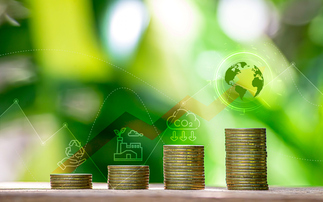
Sustainable investing has become mainstream, but it’s not a perfect science, with many challenges that practitioners must face.
In the first of our new series of SI Dilemmas, Rachel Whittaker, Head of Sustainable Investing Research, outlines one of them - whether to put greater emphasis on the environmental or social factors.
Speed read
- More investment strategies focus on environmental than social goals
- Regulation and EU Taxonomy has also put more emphasis on the E
- Rising attention now to gender equality and its link with climate change
The Sustainable Development Goals (SDGs) are described as "a shared blueprint for peace and prosperity for people and the planet", placing humanity at the heart of the sustainable development. Social goals slightly outnumber environmental goals, as well as appearing earlier in the sequence. Yet sustainable investors could be forgiven for thinking that solving environmental issues is a higher priority than solving social issues.
The majority of SI funds still take a wide range of environmental, social and governance (ESG) issues into account. As the market for sustainable and impact investing has matured, environmental topics such as climate change, water scarcity, ocean health and biodiversity are now receiving a much higher share of investor attention compared to social issues such as human rights, workplace conditions and access to finance, education and healthcare.
For example, a quick search of one of the numerous databases of sustainable and ethical funds reveals a typical pattern: 12% focussed exclusively on environmental issues and just 3% exclusively on social issues1. The pattern is not new - MSCI launched its first environment themed equity index in 2009 - but it was 2016 before an index focussed on social issues (the Women's Leadership index) appeared in its ESG index family2.
Green bond issuance
In the bond market too, the first ‘official' green bond was issued in 2008 (by the World Bank), with proceeds committed solely to environmental projects. The International Capital Markets Association (ICMA) introduced the green bond principles in early 2014. Although social bond guidelines followed just two years later, the volume of green bonds dwarfed that of social bonds until 2020, when social bond issuance finally took off (buoyed by the Covid-19 pandemic). Green bonds continue to make up the majority of assets in the combined green/social/sustainability bonds market3.
There are various theories for the popularity of environmental investments compared with social. It can be argued that…continue reading.
1 Fund EcoMarket
2https://www.msci.com/our-solutions/indexes/esg-indexes
3https://www.climatebonds.net/files/reports/cbi_susdebtsum_q32021_03b.pdf
This article is sponsored by Robeco.







